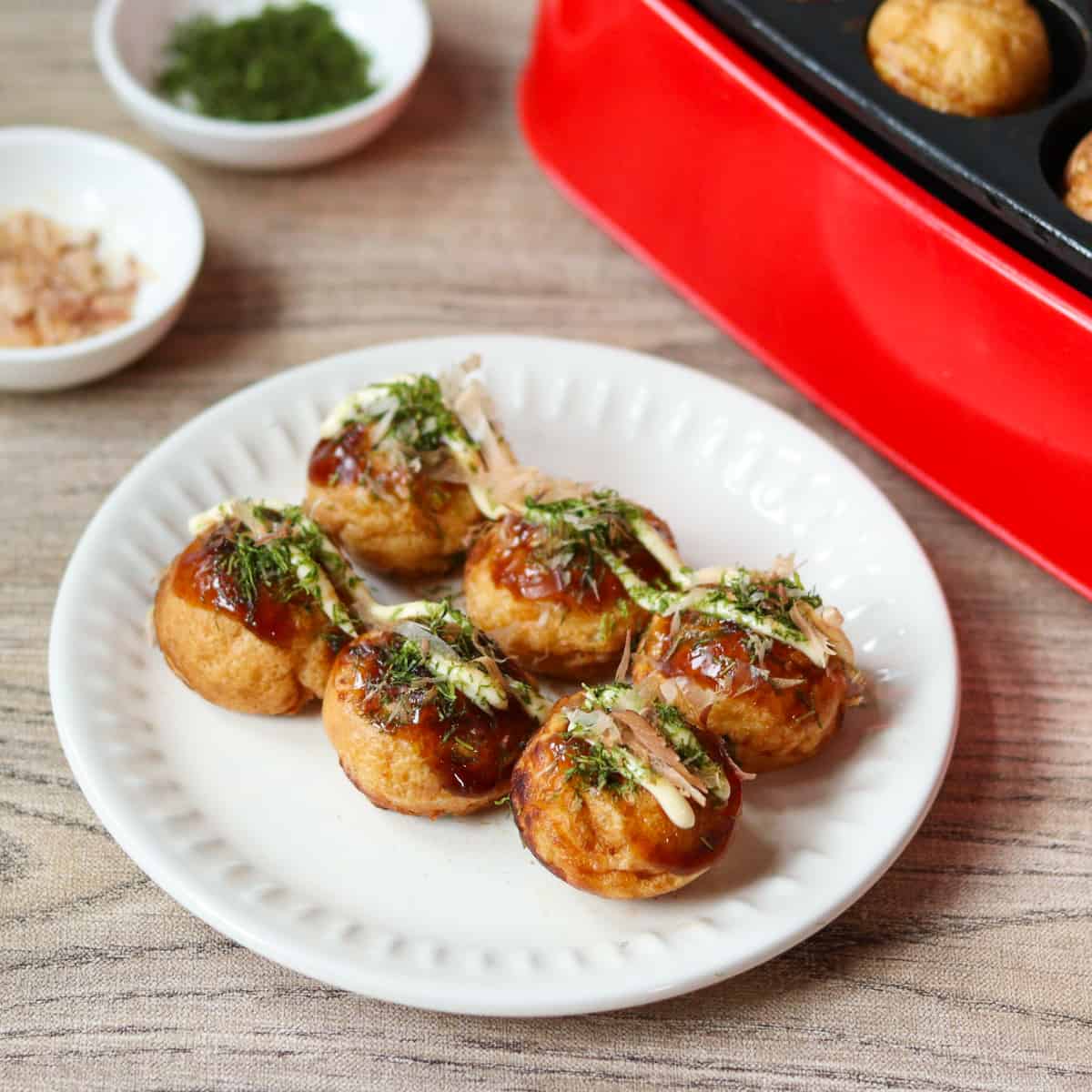
Authentic Takoyaki (Osaka's Octopus Balls)
Crispy on the outside and creamy on the inside, Takoyaki is a signature dish from Osaka, Japan. Enjoy the concentrated umami flavor of the dashi stock in each ball.
Print Recipe
Pin Recipe
Servings: 2 (12 balls per 1 serving)
Equipment
- Takoyaki maker
- takoyaki pick or skewer
Ingredients
- 3 oz boiled octopus
- 6 green onions / scallions (⅓ tsp for each takoyaki ball)
- 1 Tbsp beni shoga (red pickled ginger) (⅛ tsp for each takoyaki ball)
- 4 Tbsp tenkasu (tempura bits) (½ tsp for each takoyaki ball)
Takoyaki batter:
- 1 large egg (about 2.1 oz/60 g, including shell)
- ½ tsp sugar
- ¼ tsp salt
- 2 tsp soy sauce (If you are using takoyaki sauce, use only half the amount.)
- 1 ¼ cups chilled dashi stock (Please refer to the linked page for instructions on how to make it. For plant-based options, see the pages on Kombu Dashi and Shiitake Dashi.)
- ½ tsp baking powder
- ⅗ cup all-purpose flour (plain flour)
Toppings (optional):
- takoyaki sauce
- Japanese mayonnaise (such as Kewpie Mayo. For a homemade version, please refer to the linked article.)
- aonori (dried green seaweed flakes)
- shaved bonito flakes (katsuobushi)
Instructions
- Cut the octopus into bite-sized pieces, about ½ inch (1.2 cm) wide. Thinly slice the green onions. Finely chop the beni shoga.
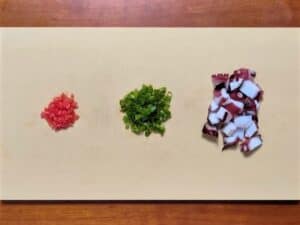
- Crack the egg into a large bowl and beat it. Add sugar, salt, soy sauce, chilled dashi, and baking powder to the bowl, and mix well. Then, gradually add flour in several portions, whisking thoroughly each time to prevent lumps from forming.* The takoyaki batter is ready.* If the lumps are less than ⅕ inch (5 mm) in size, they will dissolve over time, so you don't need to worry about them.
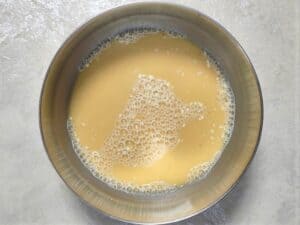
- Preheat a takoyaki maker to high heat (392℉/200℃ or higher). Pour some oil into a small bowl and dip the tip of a folded paper towel in it. Use the oil-soaked towel to thoroughly coat all the cavities and the flat surface of the takoyaki maker.
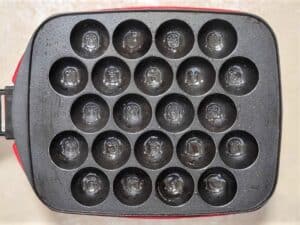
- When smoke starts rising from the takoyaki maker, pour the takoyaki batter into each cavity, then add the chopped octopus. It is fine if the batter overflows from the cavities during this process.
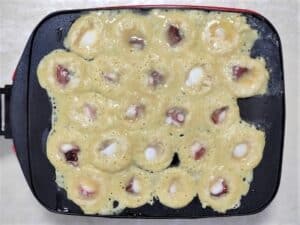
- Sprinkle the green onions, beni shoga, and tenkasu evenly over each cavity. Wait until the batter on the walls of each cavity sets.
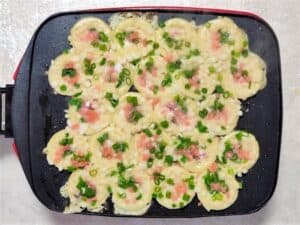
- Cut through the batter on the flat surface between the cavities with a takoyaki pick or skewer. Then, rotate the cooked portion in each cavity about 90 degrees (a quarter turn).* Wait again until the uncooked portion of the batter is cooked through.* If the batter on the walls has set, you can rotate it by applying a bit of force with the pick or skewer. If it doesn't rotate, cook it for a little longer. It doesn't matter if the batter tears slightly.

- Rotate the cooked portion another 90 degrees to cook the remaining uncooked portion.
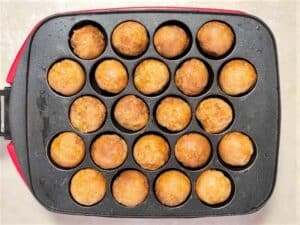
- Since the takoyaki maker may cook unevenly depending on the position of the cavities, if there are any lightly cooked balls, swap them with the well-cooked ones. Then, turn each ball over to cook evenly.
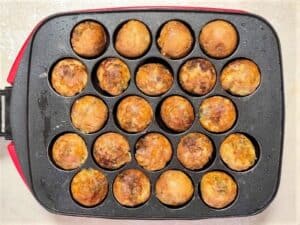
- Serve on individual plates. Top each takoyaki with takoyaki sauce, Japanese mayonnaise, aonori, and bonito flakes to taste.

Notes
- You can store it in the refrigerator for up to a day.
Nutrition
Calories: 280.06kcal Carbohydrates: 34.99g Protein: 17.38g Fat: 7.32g Saturated Fat: 1.47g Polyunsaturated Fat: 2.42g Monounsaturated Fat: 2.47g Trans Fat: 0.01g Cholesterol: 110.01mg Sodium: 1423.04mg Potassium: 389.01mg Fiber: 1.34g Sugar: 3.65g Vitamin A: 252.95IU Vitamin C: 3.25mg Calcium: 154.36mg Iron: 5.12mg
Enjoyed this recipe?I’d really appreciate it if you shared it with your friends.